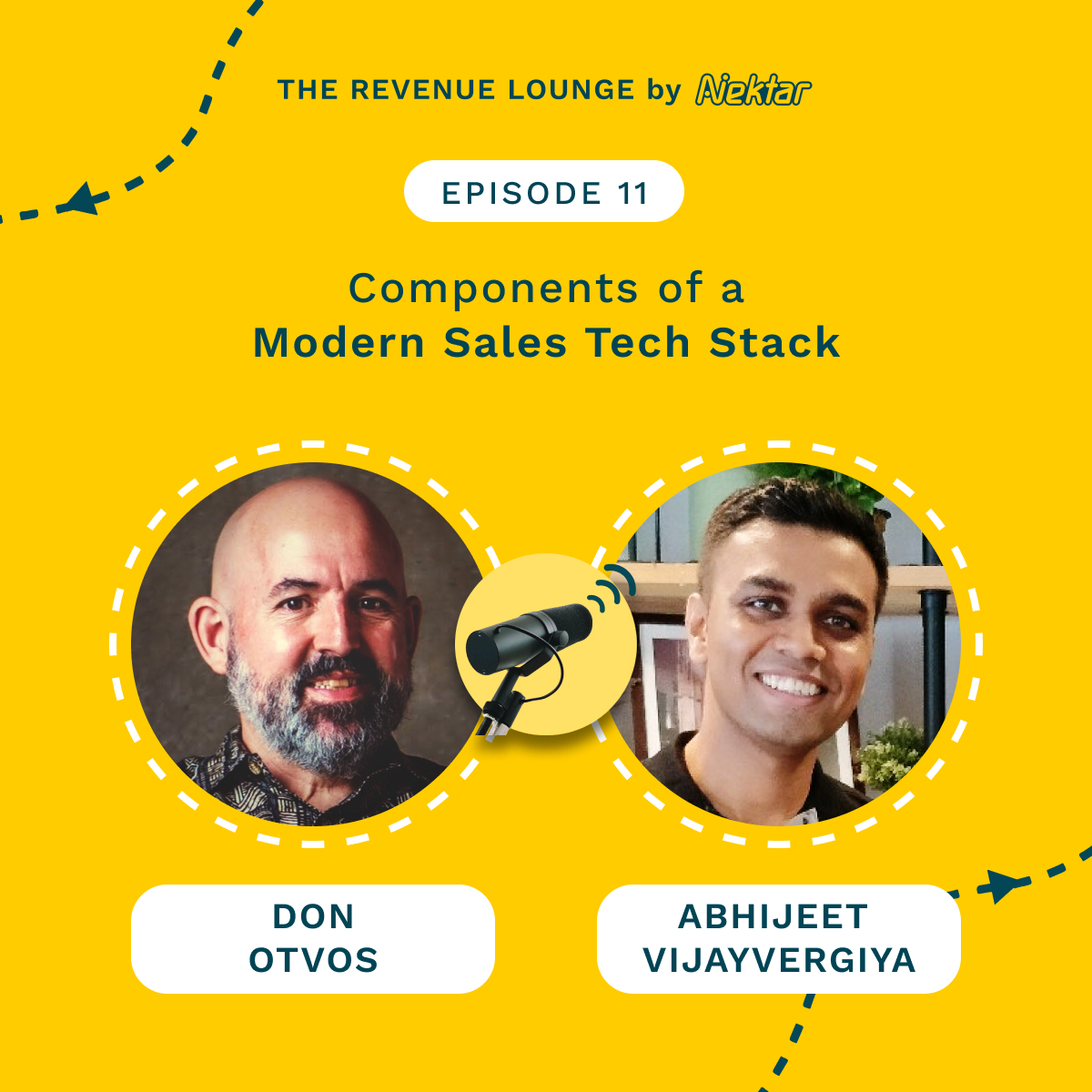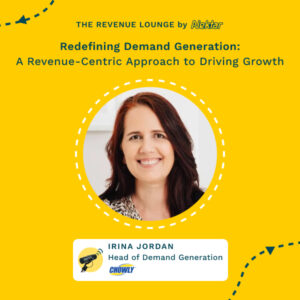Ep #2: How to Win in Times of Uncertainty
September 20, 2022
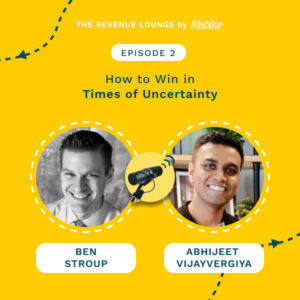
About
The Revenue Lounge
The podcast covers stories from leaders across RevOps, Sales, Customer Success, GTM, Data and Marketing about what drives these functions and what advice they would share with our listeners. With 3 seasons recorded, the podcast currently features 50+ enterprise leaders in the B2B SaaS domain. Tune in to hear from the best in the business
2020 affected businesses and altered the way we work. The pandemic is still not completely over, and the economy is currently undergoing one of the most challenging downturns. We are seeing massive layoffs, investor skepticism and other cost-cutting initiatives across the tech industry.
Seems like uncertainties have been the only constant.
How can business leaders prepare prevent themselves from such shocks? Our guest today can help us find some answers.
Ben Stroup is the Chief Growth Architect and President at Velocity Strategy Solutions where he helps leaders design, develop, and deploy smarter business growth strategies. Ben is a data champion who assists leaders in bridging the gap between ideas, innovation, and revenue—taking ideas from mind to market. He is also the author of the book “Master the Pivot: How to Lead (And Win Big) in Times of Uncertainty” that has grabbed the #1 spot on Amazon’s reading list

[00:00:00] Hi, everyone. Welcome to the latest episode of the revenue lounge. Today’s guest with me is Ben Stroup, who is currently working with velocity strategy solutions as its president he’s based in Tennessee. Ben. Great to have you on today’s show. thank you so much. I’m delighted to be here.
[00:00:19] Yeah. So tell us a little bit more about you, your journey so far. So I’ve had kind of an, a very interesting career started in sales and marketing. Moved into management, have done some consulting, sold a business, and then did a little more executive leadership experience. And one of the things I learned through all of that journey, Is that leaders are often the most insulated from the shifts that are happening in the marketplace and what the rise or democratization of technology and data has done is given us the capacity to create a listening platform.
[00:00:54] And so that was really my vision for velocity is that I wanted to [00:01:00] help connect senior leaders, the people inside organizations with the capacity to create change. With the knowledge and information that they needed about micro movements within the marketplace that would allow them to change iterate and adapt ahead of any major market disruption.
[00:01:19] And so I feel like so much of what I do now is the culmination of. Launching new products, product development, design, marketing, sales, operational management, technology, data, all those things combined. It’s such a much more integrated as today, which is why the revenue operations segment is really starting to take shape.
[00:01:42] Yeah. Phenomenal. I noticed that you have written a book which has been number one spot on Amazon’s reading list. It’s master the pivot. How to lead and win big in times of uncertainty. That’s the book you authored. Yes, that is correct. And if you, it’s a, it’s a CIS, if you [00:02:00] will, uh, you know, of, of so much of just my fundamental, um, core beliefs and, and it’s been really exciting to get feedback from leaders all over the world who have read that book and it provided, you know, vocabulary and structure and meaning and process.
[00:02:17] Around some of what they were feeling and experiencing, but unable to take action on within their organizations. Yeah. And I think the coincidences here is that the book that you return is so pertinent in today’s time. Right. And I’m sure there are a lot of ideas from this book that we can leverage today and you can share with the audience.
[00:02:37] Around how they deal with the downturn that everybody’s facing and the kind of choices that are emerging out and how we can deal with it collectively, as teams, as businesses and as leaders. So very excited to continue the conversation, Ben, but just for our audience, a broader introduction about yourself.
[00:02:56] You are the chief growth architect and president at velocity strategy [00:03:00] solutions where you’ve been helping leaders, design develop and deploy smarter business growth. And what we love about your introduction is that you’re a data champion. You’ve been assisting leaders in bridging the gap between ideas, innovation, and revenues, and helping them take ideas from mind to market.
[00:03:16] So that’s very relevant to our audience and looking forward to the rest of the conversation. So, Ben, my first question today is more about understanding your link with revenue operation space. You have like a broad background in business consulting and leader. But how that got associated with the revenue of operations in general.
[00:03:36] Would you like to share somes onto that? Yeah, absolutely. In some ways I feel like I’ve been groomed for revenue operations from the beginning. I have always fundamentally believed that business was interdependent and interconnected. And as technology came onto the scene, as data became. Kind of more available to the business line user.
[00:03:57] I found myself in the unique [00:04:00] position of being able to benefit from that. And that has allowed me over the years to build really strong relationships with technology teams and engineering teams. It’s helped me build strong relationships with business intelligence, with executive leadership, all key stakeholders across the organization.
[00:04:17] And that was really important because for majority of my career, up to the point of velocity, I was in charge of either rehabilitating, something that was in decline, accelerating, something that was growing or improving the efficiency of something that was a mature business or product or service line.
[00:04:37] And the answer to those questions is very, uh, interconnected. To people, process technology and data, and we didn’t have the vocabulary of revenue operations 20 years ago. I just always felt like I never fit in anyone’s box. And then all of a sudden the clearer that it becomes, how definition is taking [00:05:00] place around revenue operations.
[00:05:01] I think I might have finally found a category. That I can say was uniquely designed for me. I see so much of what I’ve done in my past and my present. And I, this is a space that for the next, you know, 30 years of my active professional life, I wanna make sure that I’m a part of and invested in. Yeah. I think what you just described, Ben is very similar to what founders and startups go through in their early.
[00:05:26] When they are struggling to bucket themselves into a particular category and you to figure out first escalate, then differentiate. I think it’s like something which is like widely taught in startup marketing. So I, I feel you, when you say that you worked in rev ops, but there was no category like rev ops, and then now you feel strongly associated with it as the world acknowledges the category.
[00:05:47] So, yeah, I mean, wonderful to hear that. So coming back to the word revenue operations in general, it. Different for different businesses. And I I’ve heard guests coming on the podcast, we have given different [00:06:00] definitions of it. So I would love to hear your version of it. What do you mean by revenue operat?
[00:06:05] Yeah. So the word that we use in our work is called growth architecture, and it really is a byproduct of bringing operations to the strategy table. What often happens in organizations is the leadership team goes to an offsite and a beautiful location. They have a wonderful ideation session, wonderful ideas that come out of that collaboration looking ahead.
[00:06:29] And then they come back to the operations team and they say here, make it true. And what’s unfortunate is that begins to deconstruct some of those strategic ideas that weren’t fully developed. And that’s sometimes perceived in organizations as well. You just don’t believe in the future, or you just aren’t open to breakthrough results, or you’re just stuck in current constraints, or you’re just trying to mitigate risk.
[00:06:55] And the truth is, is. We’ve just gotten it out of sync. We think that in kind [00:07:00] of that industrial management mentality that, you know, I’ll do step a or step one, step two, step three. We, we’re kind of in a world where business development and growth is more of a spectrum. It’s not linear at all. It’s not compartmentalized.
[00:07:16] It’s very interdependent and interrelated and interconnected. And it’s constantly moving across that spectrum of success and failure and growth and learning. And so growth architecture or revenue operations is more commonly discussed is really about. Building the capacity within the organization, across those four key functions of people, process technology and data that enables the organization to actually convert the idea into some type of marketplace value.
[00:07:50] And that actually creates what we call a culture of learning. Uh, where we are looking at a single problem with clarity, [00:08:00] consistency, and agreement, that the problem is the problem and that as we are moving through the iterative steps to arrive at some new conclusions, or perhaps even working through those initial hypotheses, we have a structured and disciplined approach to that, so that we’re creating.
[00:08:18] Corporate documentation, institutional knowledge. And then once we arrive at a repeatable formula, how in fact do we move that learning from the edge of the organization back into core operations that mitigates the risk of interruption and disruption of current revenue streams, while accelerating the capacity to continue to grow and adapt moving.
[00:08:43] So growth architecture would be the word that we would use for revenue operations. I love the word. I absolutely love the word growth architecture. It really describes in essence, and it actually elevates rev ops to a certain degree, right? Otherwise, rev ops in general by definition [00:09:00] sounds quite operational and there is a lot of operational work involved.
[00:09:03] It’s a lot of tactical day to day firefighting. Yeah, I’ve done well. There’s a lot of strategic value that DevOps ops can deliver to an organization, right? It can become a key value driver and not just like a cost center. So I think a great definition absolutely loved it. And I really appreciate the way you describe the four key functions, which it affects people, process technology and data.
[00:09:28] It absolutely summarizes the value that rev op delivers and, and the different spectrum that it plays. It’s great to hear that definition of yours. So then the next question that I have is which brings us to the current market conditions, right? I mean, it’s been brutal out there, right? The layoffs have topped, I guess, 21,000, just in the us alone.
[00:09:50] And we’ve been facing an unprecedented downturn in tech, which has not happened for almost two decades. Right. So I think the world change after [00:10:00] pandemic and the current downturn is really testing the limits. Most businesses. So what is the plan you think leaders need to have to face such uncertainties?
[00:10:09] What would you, uh, give us your recommendation to the business leaders out there? Yeah. So there are a couple of things that I think are, are really important. One is I wanna reframe, uh, downturn. And uncertainty, those are emotionally charged words. And I think one of the things that we can, we can come to this challenge and we can bring our emotions and our fears and all of our history of what went well and what didn’t go well, and that can drive our decisions, or we can come to it and recognize is this an opportunity that we can use to strengthen us and to change us?
[00:10:46] So the truth is, is that disruption is happening all the. It’s just, there are these moments in time when what’s happening in the marketplace is now colliding with leadership’s [00:11:00] capacity to function as it is currently designed. And the unfortunate reality is oftentimes and the larger the organization, the greater this risk, those that have the capacity to make the decisions are the furthest removed and the most isolat.
[00:11:14] From the actual disruption that’s taking place. And because we haven’t really bought into the practical idea of having a single technology spine and a free flowing amount of data, that’s then accessible to every business line leader, informing real time daily decisions. We don’t get to see the micro disruption until it gets to a point in which we can’t avoid it because that confirmation bias that energy.
[00:11:44] That blindness, sometimes that we bring because of our past success to current reality brings us to that. And so if we kind of divorce the current situation from the emotional aspect of it, What the marketplace is asking us to do is [00:12:00] to reconsider if the way that we’re currently structured and operating is optimal for a much more volatile environment.
[00:12:08] We’ve been in disruption for quite some time, that disruption was accelerated in 2020. We were just on the tail end. Of a really high upswing. And we rode that out as long as we could. And that is the tendency of most organizations because the scorecard is those lagging indicators, not the leading indicators.
[00:12:31] And until we shift the conversation to the leading indicators, then we will always be reacting to the situation as it is now. I don’t wanna make light of the fact that there are real human lives being impacted by what’s happen. But I think as leaders, we have to come to grips with the way that we have operated organizations has to adapt to market conditions.
[00:12:55] And right now those two realities are not playing well [00:13:00] together. And so I think what’s actually happening is the marketplace is asking organizations to shift organizations are by default, you know, resistant to that shift. And until they do, they won’t realize that change a great example of. Is Satya Nads rise to the CEO.
[00:13:19] Steve Balmer followed bill gates at Microsoft and Steve Balmer for the entirety of his career, got an a on his scorecard. He delivered results for Microsoft that were consistent with how he was being measured every single time. But in the court of public opinion, he missed. He missed cloud. He missed the influence on the individual.
[00:13:40] He missed the, bring your own device to work because he was so tunnel vision. And so stuck on how the enterprise was driving, how workers worked and that just that decentralization of technology was taking place at the same time. So Nadella comes on the scene and he says, what mobile first cloud [00:14:00] first.
[00:14:00] And he literally renegotiates Microsoft’s relationship with its customer base, not around licenses, but around a preferred future and giving them the tools and the platform in order to be able to build that, that created massive value. It was crazy risk. I mean, I don’t, everyone forgets the early conversations when the Dell took over, is he the right person?
[00:14:25] Can somebody from the inside really create change? Is this idea of disbanding, the windows division? Even like sound like is he lost his mind. And then that book hit refresh that he wrote, which is a fantastic book that every single leader ought to read in this particular season, is that what he saw was an opportunity to reconnect.
[00:14:46] Microsoft’s present. With the impetus from which it was founded. And that was to enable organizations and leaders to create the vision and enable the vision that they had in their mind. [00:15:00] So we have to reframe that disruption and we have to recognize that second, we have to create a listening platform.
[00:15:07] The end result of a listening platform is to become respons. And the more mature the organization, the more mature the service lines, the more institutionalized those organizations become and the less responsive they become, because it becomes very formulaic and you just keep. Hitting that particular formula until it’s no longer productive.
[00:15:32] And what often happens is that time period can be 10, 15, 20 years before that disruption takes place, which well exceeds the tenure of the current leadership team. So there’s no real reason. because we’re not incentivizing people with the right score card for them to really initiate a responsive initiative that allows them to constantly experiment and adapt.
[00:15:59] Now, just like we [00:16:00] talked about Microsoft, don’t wanna talk about Google. You know, there’s two things that I think Google does, and it talks, we talk about this in the book, how Google works, which I thought was just a fantastic. Experiment and leadership model for our current time, two characteristics that I pulled outta that book one was they’re looking for the smart, creative.
[00:16:17] They want somebody who is, they know how to think they know how to solve problems. But they’re not a specialist because a specialist brings with them to whatever situation, a predefined set of criteria and a predefined action plan. And they’re really closed minded in that. Well, in a world of entropy closed mindedness only works.
[00:16:38] If all of the constants are the same, there’s fewer constants now than never have been. Right. So even, even our statistical modeling pre pandemic, it doesn’t really stand up in business analysis because we don’t yet know what changes, what permutations were temporary and what permutations will be permanent, um, which may completely lead us to [00:17:00] opposite conclusions.
[00:17:01] So the smart creative allows them to constantly be humble enough to be able to, uh, arrive at a new conclusion. The second. They focus on building interconnected and interdependent teams for multiple disciplines within an organization to solve a single problem with a time limit every three years, they disband that team and reconfigure that team cross pollinating across the organization, that kind of learning well, that flies in the face of industrial management philosophy.
[00:17:30] Right. You know, product development does this, it goes to marketing, marketing does their thing. It goes to sales. And the problem is sales says, well, if marketing would just do better, then I’d sell more. And marketing would say, if, if our engineers would just build better products, we could actually market ’em more.
[00:17:47] And when we saw a lot of the design thinking, starting to emerge 10 years ago, and we started to see the idea, could we put engineering and marketing together? That was the beginning. Of a cultural environment where we were bringing [00:18:00] multiple stakeholders to the table in order to solve a common problem.
[00:18:05] And we do this a lot at velocity across organizations to try to get what we call just a basis of current reality. And what we find is is that it’s very uncomfortable to have multiple stakeholders at the table. We still have not learned that behavior engineering doesn’t know how to talk to marketing marketing.
[00:18:22] Doesn’t know how. You know, talk to sales, sales doesn’t know how to impact leadership and everyone’s talking over each other or at each other, not with each other. And so if we recognize that disruption is the new business reality, then we have to become more flexible. We have to become faster. And that means we have to become responsive.
[00:18:44] That means that we have to shorten the distance between the micro changes within the market. And, and the leadership decision making table, and we have to focus stronger on leading indicators. And if we will do those things, then I think we have [00:19:00] a chance on getting to the other side of it. Every disruption puts pressure on current business models and gives opportunity to develop new business models.
[00:19:10] And unfortunately we’ve built things to grow really fast. And what happens when you build something to grow really? It doesn’t always have the infrastructure that’s needed to sustain the changes that are taking place. Think about a skyscraper, right? It takes forever to pour the foundation and to build the first two or three floors.
[00:19:28] And then building up beyond that is, is really fast. I mean, it just seems like all of a sudden overnight, it just goes up. So within our organizations, this is why the revenue operations conversation is absolutely urgent because what it does is it enables the connection of the, you know, the people, the process, the technology, and the data that allows organizations to shorten that distance, create that listening platform and be responsive to the shifts that are taking in the marketplace.
[00:19:57] That is your risk insurance [00:20:00] policy, because it allows you to stop things faster. It allows you to start things faster. It allows you to adapt faster and do so. Not simply based on history, context, confirmation bias, or any other things that we would personally bring to it, but absolutely challenges at our core, um, that the idea that we can unilaterally.
[00:20:24] Know what the next right thing to do is, and that I think is our greatest challenge. We’ve gotta stop waiting for Moses to come off the mountain with the 10 commandments. And we’ve gotta start looking a lot more like a council. That’s getting together to figure out through the push and the pull and the compromise and the multiple vantage points of how in fact are we going to move forward in unison in concert, um, aligned and Cooper.
[00:20:52] Love it. I absolutely love your answer. I think the, the biggest takeaway for me there was having a single technology spine [00:21:00] and having a free flowing data across the organization to break the different silos that exist. Right. I mean, in a typical organization, we see every function creates their own data, which is scattered.
[00:21:11] It doesn’t get connected to the broader company. Right. And nobody focuses on leading indicators. Right. We are all like tracking lagging indicator. Like doing a win loss analysis, what went wrong. But I think your emphasis on leading indicators and then rev ops is a place where all of this can get started.
[00:21:28] So you connect the people, process technology and data, and there you have like a great army in place, which can be responsive to the market fluctuations by having a single technology spine and connected data. Right. So I think the downturn. Brought revenue ops, uh, in spotlight, if you’re not invested in it today, um, there’s no better time, uh, than today to get started.
[00:21:55] 100%. That’s your insurance policy is going up the funnel, if you will, and [00:22:00] making sure that you fully understand what’s happening. So, absolutely couldn’t agree with you more. Definitely. So the next question for you is around the role of developing a data strategy. I think you spoke a lot about a unified data or free flowing data across the business organization, right?
[00:22:15] So what is the role of developing a data strategy when it comes to dealing with uncertain times, what DevOps can do, uh, with respect to data strategy and what should be included into such a strategy, if you can probably throw some light in detailing that out. Yeah, absolutely. So I think there are three things that are really important.
[00:22:34] One, you have to have the data. And one of the things that I see all the time is that we don’t have good capture systems. If you, you need a massive amount of data, we have no idea just how much data is required in order to. Really fuel what we’re talking about at the same time, we also don’t appreciate how much data we have access to.
[00:22:55] We just don’t have good capture systems. And part of that capture system is [00:23:00] simplifying your technology stack. Because what ends up happening is different departments institutionalize their current reality by using technology. It really enables them to find the technology that fits their workflow, irrespective of how that workflow impacts someone else.
[00:23:17] This is very true that marketing. Might have a set of technology that they use, and that might be different from sales. And those two systems may not talk back and forth. Well, that really doesn’t help the conversation of having the same, talking about the same. Data in the same way about the same things and that ultimately necessitates the data dictionary.
[00:23:39] Right? So, I mean, that’s one of the technical applications here is that we really do need that. So you need, need a good, good capture system. Once you have the data, you have to give people access to the data. I can’t tell you how many times, and I’m not talking. Descriptive data. We’re really good at that.
[00:23:56] What already happened? We spend hours building [00:24:00] PowerPoint presentations and doing analysis around what happened. And that’s fine. Looking back doing a, what do you call it? You know, a postmortem or retrospective or whatever, whether it’s good or bad, you cannot change the past. And so it’s it, that that is one of three elements, right?
[00:24:16] We need that prescriptive and predictive modeling that’s in there, but that means that business line leaders, business managers, typically non quantitative analysts have to have access to the data. And we have to do that by moving the responsibility of the BI team from being the report writers to their report curators.
[00:24:39] And one of the things that I’ve always tried to do in my various leadership roles is build bridges with the business intelligence team. And what I’ll do is, is this is why I started using Tableau early on. I spent my own money cuz the company didn’t even understand it at the time. That’s how early it was.
[00:24:56] And I started pulling information out of different databases and [00:25:00] visualizing that and using that in leadership conversations to make M and a decisions or to make rebuilding departments or operational commitments that were within that. And I would, I would work. With the technology team and with the BI team to get the data, I would do the work of understanding the data.
[00:25:17] And then I would come back to the BI team as a collaborator and say, this is what I think I’m seeing. This is what I think I’m learning. And they would come alive. Our, our BI teams all across, you know, organizations are desperately waiting to have an engaging conversation, not complete one more report in some prettier quote, unquote fashion than can be done in Excel.
[00:25:42] That’s so flat compared to what they can do. And when you bring those two things together, Looking at the same problem, the business manager, trying to solve it from the, the language of business and the BI leader, trying to solve it in the language of data, you create a marriage, a partnership that is [00:26:00] absolutely actionable.
[00:26:02] That’s helpful. So we gotta have the data, we gotta simplify the collection of it. And in simplifying the collection of it, that helps with the architecting of it, which makes it more accessible. And trustworth. We’ve gotta give business leaders, typically non qu access, which means that we’ve gotta train them.
[00:26:18] Then here’s the biggest gap. We’ve gotta help them understand what the next step is simply looking at the data. And this is why all the reports from, you know, Deloitte and MIT, Sloan, and HBR, and all those places say that CEOs typically are very unhappy with the amount of in investment they’ve made in data.
[00:26:41] And the lack of return on investment return on investment. Can’t be measured in cuz we’re not really selling a product cuz it’s an internal, which you know, in, in the CFO world would be an operational dependency. Um, but it’s really not enabling smarter, better, faster decisions that then can be [00:27:00] attributed to growth, profit.
[00:27:01] Margin acceleration all of those types of business results that you are looking for. But a lot of that has to do with, and, and I, I don’t know any other word for it, other than wisdom. It’s when perspective and experience comes together and you can start to see when those patterns happen. This is what’s about to happen.
[00:27:21] And that then enables a real time. Convers. With a micro disruption ahead of a major market change or challenge. And when you can actually see that it can be incredibly empowering. Imagine. Being able, did this with a client where we juxtaposed two conjoining cohorts and they couldn’t be more diametrically opposed to what they bought, how they bought at the speed in which they bought it and the amount of money that they spent on it.
[00:27:51] And so what did we do? We just created two different segments to facilitate that because if we tried to sell the same thing to both cohorts, it [00:28:00] wouldn’t. One one would win over the other. Every single time one would become a self-fulfilling prophecy, right? This is our ideal cohort. Or what you could do is change how you sell it when you sell it.
[00:28:11] All of that. This is why we talked about Tableau. This is why Tableau still sells an annual license and a monthly subscription because there’s two cohorts that they’re selling to. Right. One is the person who’s used to buying a license, right. And, and having that annually or lifetime. And then there’s one that’s used to, that’s used to paying for it on a monthly basis.
[00:28:34] And, uh, and that’s, that’s vitally important. So when you’re able to actually have those conversations, it opens up new possibilities and it really pushes back on what I call drift within organizations that preserves. Current reality. So for instance, mark, you know, uh, there might be pushback that we’re spending too much on market.
[00:28:55] It’s not really proving ROI, but when you look at appeal [00:29:00] by appeal or you look at campaign by campaign, the actual results are actually up. So yes, spending is up, but all of the results that are there, the actual constraint is converting the sale. The marketing qualified lead into the sales qualified lead, which has to do with the SLA between marketing and sales.
[00:29:18] So in a normal sense, we would’ve looked at marketing and said, we gotta cut your budget and you gotta make bricks without straw. Right? That’s the common theme. But what we really needed to do is elevate the capacity of marketing to influence how sales operated early on in the opportunity creation process.
[00:29:35] And then when we looked at sales, we needed them to understand how to communicate feedback loops back to marketing. Once we able to create those common D. Guess what happened? We started having different conversations and new results took place. So, so when we talk about a data strategy, we’ve got a, we’ve got to systematize lower the friction to collect and structure that data.
[00:29:57] So then it’s readily accessible by quantitative [00:30:00] analysts and business line leaders. And then third got to elevate the skillset, which is not a native skillset. Um, we’ve gotta elevate the skillset to be able to look at realtime data and make new decisions based on that information. That’s a kind of a layman’s way of talking about what a data strategy might look like.
[00:30:22] Yeah. And I think the fundamental thing is capturing this data. As you mentioned, data is only present. We are generating data with every passing second, but so much of data doesn’t get captured. It’s not accessible, it’s all scattered and in siloed. And there’s such a big opportunity loss in terms of what our data can be done.
[00:30:41] But this is a great segue to the next question I had for you, which was. Harnessing this real time data, right? I mean, how organizations can capture this data and harness this real time data that we all generate, uh, for a quick and effective decision making, especially in the times of uncertainty like today, when there is a crisis looming.
[00:30:59] [00:31:00] Uh, and as you pointed out in your previous answers, that this becomes even more important to capture and analyze this data. And what do you think businesses should do to harness this? And second extended question there is. Can AI play a role in making this happen? The world has been talking about AI for quite some time, but what is your perspective around technologies like AI to play a role there in harnessing this data capture?
[00:31:24] Yeah, no, that’s, uh, absolutely important has to get to a point where a human being isn’t required to do an upload. Except in an exception scenario, there used to be a role within organizations called a business systems analyst, and they became the hub. If you will, across all stakeholders. And they translated the language of business into the language of technology, the language of technology into data, data, back into business all the way back around.
[00:31:51] And I think we really need to rediscover. What that role meant in being a linchpin for an organization to accelerate this? [00:32:00] Because what, what ends up happening is, you know, it’s, it’s like getting people together who don’t speak the same language. You can be trying to solve the same problem, but if you’re not speaking the same language, it doesn’t matter.
[00:32:11] You know, it’s just confusing and frustrating, which is how most people feel when they sit in those cross functional meetings. It’s a waste of time. Right. And it just further perpetuates the. um, and the, the kind of the frozen reality that we have around what that is. Instead, we should elevate a capacity within an organization.
[00:32:30] It’s probably more than one person depending on your size, but it could be one person whose sole job is to understand how the business functions and what the business requirements are. Once you have the SOPs and the SLAs and the requirements across all of it. And, and you can get past this kind of colloquial.
[00:32:49] I need this, I need this, you know, and you can tie those business requirements back to the results that are needed. You have the architecture necessary in [00:33:00] order to, to create. The piping, the structure, if you will, across the organization and then artificial intelligence, you can use to your advantage to increase, accelerate the ability to programmatically capture that data and structure it.
[00:33:16] So then it can be utilized to identify variants in mass quantities. And that’s just it, I mean, we’ve gotta have a lot of data for artificial intelligence to make sense, but artificial intelligence can’t fix a lack of communication and a lack of leadership and a lack of ownership and a lack of accountability.
[00:33:34] At the leadership table. Um, it’s not technology’s problem to fix it’s technology and business intelligence opportunity to lead. And this is the problem. We still have mentality that BI is there to write a report that I, I need for somebody about something that’s already happened. That’s prettier than what I can do.
[00:33:55] And the technology is there to make sure my laptop works and I’m connected to the [00:34:00] internet instead of really understanding how those disciplines are absolutely vital. Remember, we talked about bringing operations to the strategy table. They’re absolutely vital at understanding how you build responsive and effective organizations.
[00:34:15] And this isn’t just for technology firms. This is for professional service and. This is for B2C and B2B companies, all of those kinds of things. This is what this new reality looks like. And the truth of the matter is the larger the organization. The less flexible you are, the less capacity you have to do this.
[00:34:32] The, and the further down in an organization, you go, the less likely the manager is going to do this, um, of their own volition. So this is gonna have to be a strategic initiative, a repositioning and a rethinking. I’ve got, got a friend that says you can either. Before you have to, or you can change because you have to.
[00:34:52] And that’s what we’re experiencing right now. Organizations who have been toned deaf to the changes that have been happening in the marketplace over the last decade. [00:35:00] But particularly over the last 24, 30 months, we all saw it coming. We just didn’t wanna acknowledge that reality because it was too painful and too much work to be quite honest with you.
[00:35:10] And so if you didn’t change before you had to, now you have to change because you have to. And that starts with a leadership vision. That’s willing to roll up its sleeves and, uh, you know, and dig in. It starts at really becoming what Lindsay talks about in the ideal team player. Humble, hungry, and smart.
[00:35:30] Yeah. Humble, hungry and smart. I think they are like great keywords for any leader to emulate. And yeah, that brings to the point around culture, right? I mean, these are values that leaders should leave by, but there is a broader organization. Leans onto the culture that is important in terms of charting the path, giving clarity in times of uncertainty.
[00:35:54] So how do you think leaders can course correct their culture now to make their [00:36:00] automations and their teams head into the right direction to deal with the crisis? Uh, I think we need to start having some honest and transparent conversations. I think we really do need to lean into what we call a culture of.
[00:36:13] We need to understand that the goal is not perfection. The goal is continuous improvement. Uh, we need to rediscover the value of corporate documentation and what process management actually means. We need to have honest conversations and celebrate when somebody. Hits a roadblock. And it’s something that we ought to either learn from, stop doing or do differently and not penalize the leader who identifies that, but actually celebrate.
[00:36:44] Even if it doesn’t work, we need to also rediscover prioritization. I’ve never worked with an organization that doesn’t have constraints of time, money in people. I don’t care how much money you have, how many people you have. Um, everyone has [00:37:00] constraints of time, money in people. So the question is how are you as a leader appropriately allocating all your available resources and how is that allocation of resources in relationship to your strategic priorities?
[00:37:12] This gets into how we build teams. This gets into how we do prioritization and operational allocation. This gets into what we value and what we’re willing to let go of so that we can step into this, um, very different, you know, reality that’s in, in front of us. But that culture of learning means that we don’t value arriving at the conclusion we value the process of evolution and that’s where we’re.
[00:37:41] We have to remain flexible and responsive. And that means that we never actually arrive at that end result. We have lived for a long time. A lot of business management philosophy has lived for a long time, um, that, you know, it’s, it’s, it’s a, it’s a kind of an, a lingering reality of a manufacturing era, [00:38:00] right.
[00:38:00] We had coming outta world war II. We had all these industries, um, emerge within American culture. And they were led by people who were raised by the military and they really institutionalized that. And that’s not a criticism of the military. So we have the greatest military in the world. Very proud of all of that, but it’s a very top down hierarchical.
[00:38:20] Setting and leadership strategies within the military have shifted since then, because we’re not commanding a hundred thousand troops walking across the desert, um, you know, solely anymore as a strategy. We now have multiple fronts and we’re fighting in multiple ways and we’re using technology and boots on the ground and all these other things.
[00:38:41] And so it’s much more team driven, much more. Cooperative and interdependent than it ever has been. And that’s, that’s what we have to do. We have to break away this idea that you do this, I’ll do this, you do that. And we have to realize that there might be some unique perspective that the person who does step three [00:39:00] might have that the person who does step one might need.
[00:39:03] Um, and we can’t do that until we foster that conversation and foster that culture of learning. So if there’s one thing that I think will preserve your organiz. It is really being a champion for learning. And what does that mean? How do you do it? How do you achieve it? Otherwise you just perpetuate current reality and that’s fine when you have normal situations.
[00:39:26] Um, but the marketplace is going to discipline organizations who are trying to maximize mature lines of. Using mature operational strategies. We’re seeing that in the auto industry with supply chain disruption, and we got very comfortable with just in time supply chain and what happened. We got bit because we tried to take it to its absolute end.
[00:39:50] You realize some manufacturers were depending on one foreign entity to create one particular piece. And without that [00:40:00] piece, the entire vehicle didn’t function. I mean, that is the philosophical end of a spreadsheet exercise to distribute risk and maximize. Yep. Definitely. I think culture plays such an important role.
[00:40:15] The important takeaway for me, there was this whole culture of continuous improvement and trading and getting better every day. And then, yeah, I mean, evolving with time. I think it’s so, so important, right? From a strategic to tactical direction. Uh, it’s so important to continuously evolve and improve yourself.
[00:40:34] So that culture starts from the top and it’s so important even so in today’s. This brings us to the end of the segment. This segment is about rapid fire questions. So I’ll ask you a few questions, which very common for our other guest as well, gives us good perspective about your likes and dislikes. So the first question is about your favorite book that you recently enjoyed in the past.
[00:40:58] Uh, So I read [00:41:00] a book called lights out, and it’s really the story about the rise and fall of general electric. And I think it’s a wonderful learning for business leaders in today’s environment. There was a moment in time when GE became more enamored with the machine that they had built. Than the marketplace that they were serving.
[00:41:22] And that was the beginning of the end. Nice. The second question I have for you is what’s your favorite part about revenue operations? My favorite part. Yeah, our, the wonderful people that I get to meet both across the organizations that I serve and the people in the space. Um, there’s something about being in an emerging environment that brings out a desire to help each other be successful.
[00:41:49] And I just really feel that that spirit is very real within rev op, I think that’s a part of operations as a whole, you know, we want to make other people successful. [00:42:00] And I think that’s translated in how the industry is, is working, uh, you know, with each other. But also what I like about it is it is I get to meet some wonderful people inside organizations who are trying to do great things.
[00:42:11] And when they’re able to find new energy in order to get. Oh man. When that light bulb comes on, when that experience happens, it’s life changing. Yeah, indeed. It is. Who’s your favorite rev ops leader that you personally look up to? So there are two, one is Todd Hawkinberry. He has a consulting organization that works a lot in manufacturing space and others.
[00:42:37] I think he’s brilliant because he takes very complex things and makes it very simple and accessible to the organizations that he works with. And I really strive to do that. It’s very easy in the midst of the technology and the data to get this, to become a really complex conversation, but he. That in order to enroll everyone that he works with in that preferred future, he needs to be able to make it [00:43:00] accessible to every single stakeholder around the table.
[00:43:02] The second person, in fact, he and this other individual wrote a book called inbound organization together, but I happened to meet both of them separately, but you know, they just both happened to have written that book, Dan tire at HubSpot. And this is a guy. He’s been around a long time. He came to the revenue operations conversation.
[00:43:18] He was doing rev ops before anybody had that, that name kind of, I identify with that because I feel like in many ways I was doing that before it, um, but he’s just the essence of humble, hungry, and smart. And I hope that if I ever achieve his level of success and platform, that I will be able to be as helpful to others as he has been to me, it’s been a wonderful encourager and a, and a constant champion for this new.
[00:43:45] Nice. Awesome people to look up to. We’ll definitely check them out and hopefully we’ll try to get them onto this podcast as well in subsequent episodes or seasons. Thanks for sharing those names with us. The last question I I have for you, which brings us to [00:44:00] the end of this brilliant episode that we’ve enjoyed with you is around one advice that you’d want to leave us with in our audience, which is mostly folks who are starting their career in rev ops, or are.
[00:44:14] Grow more strategic in their roles as they practice rev. Op, what would be an advice that you’ll leave for us? Stay curious is how I would summarize that don’t get too locked in. This is a space that’s gonna shift a lot. It’s already shifting. It’s continuing to shift. It’ll continue to evolve with it.
[00:44:31] It’s the nature of data and technology. It’s the nature of business. If you stay curious, then you’ll stay open. You’ll certainly continue to refine your own skill sets and your experience. Those will continue to compound, but if you stay curious, you’ll, it’s kind of the antidote to drifting into specialization and specialization, I think has a much smaller footprint in this new and emerging world than it has in the.
[00:44:56] Yeah, stay curious. So that brings us to the end of this episode. Thanks [00:45:00] Ben, for joining us today and sharing your wonderful insights and experience, it was super awesome chatting with you today. And it was a very relevant conversation and today’s current times that we see with respect to the market downturn.
[00:45:13] So there are definitely some nuggets of wisdom, which are very actionable for our audience. Thanks again for joining us today, Ben. It was great to be here. Thank you so much.

Ep #1: Navigating the Downturn with a Hyperfocus on Productivity
Listen Now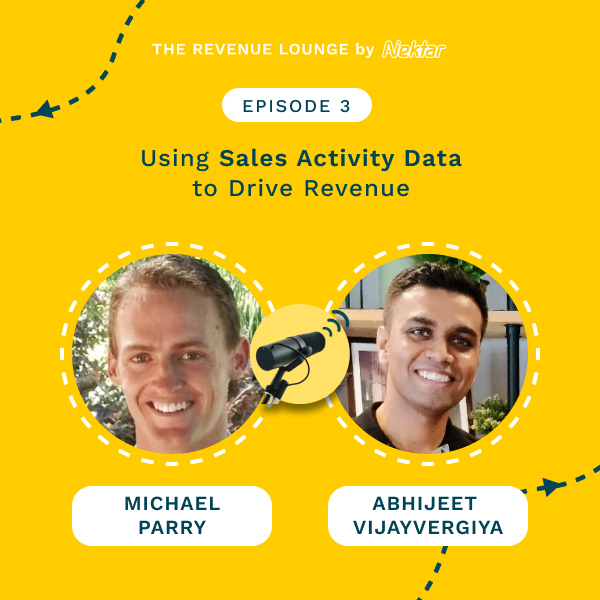
Ep #3: Using Activity Data to Drive Sales Productivity
Listen Now
Ep #4: Creating a Successful RevOps Roadmap
Listen Now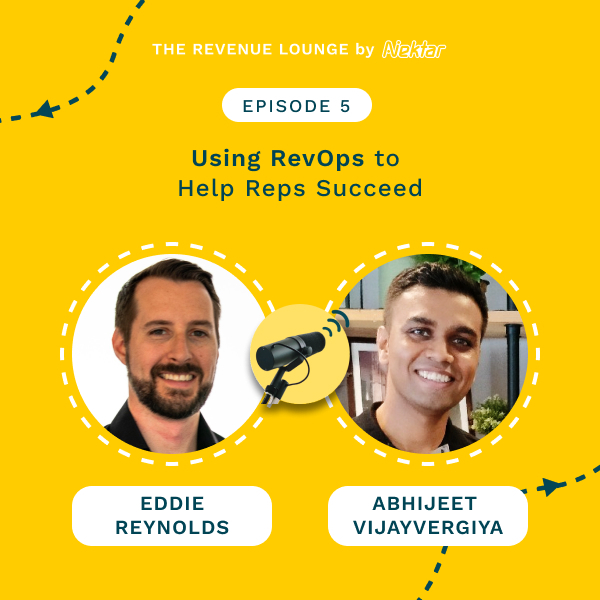
Ep #5: Using RevOps to Help Reps Succeed
Listen Now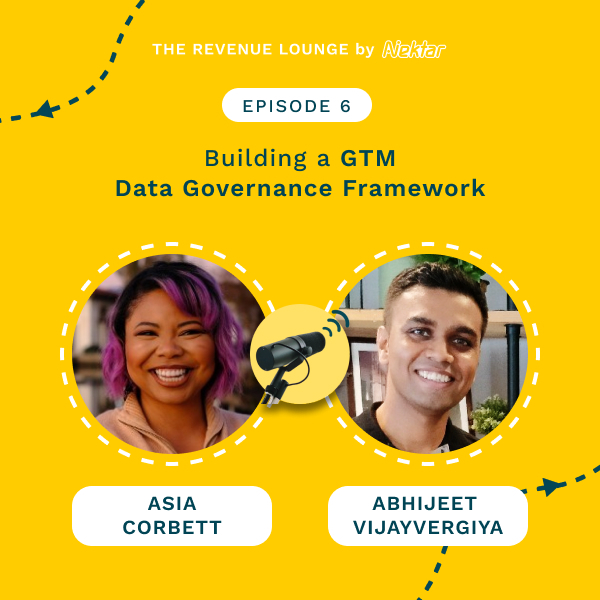
Ep #6: Building a GTM Data Governance Framework
Listen Now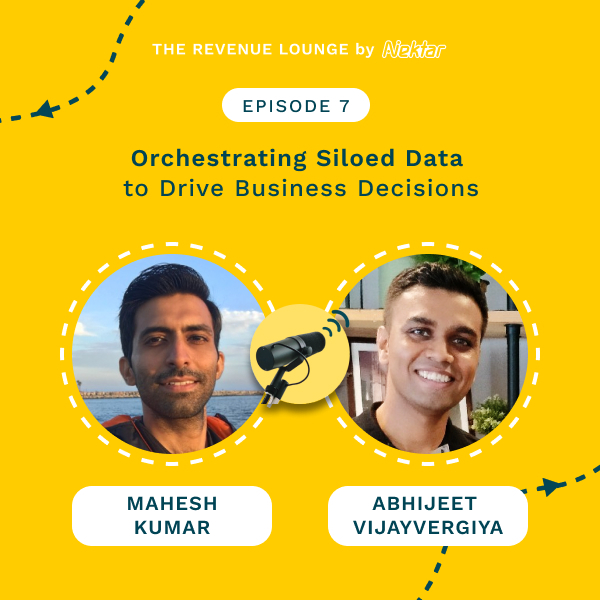
Ep #7: Orchestrating Siloed Data to Drive Business Decisions
Listen Now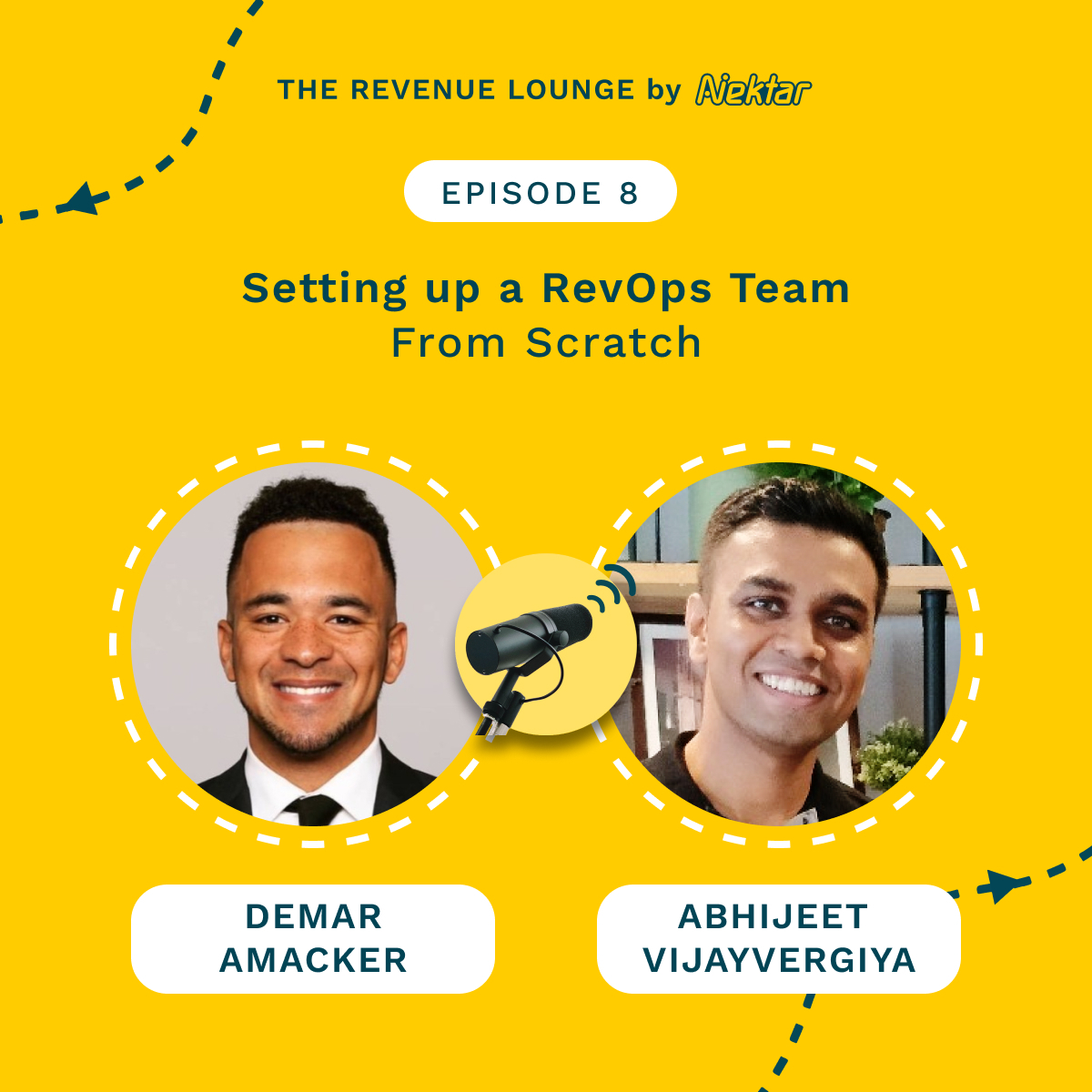
Ep #8: Setting Up a RevOps Team From Scratch
Listen Now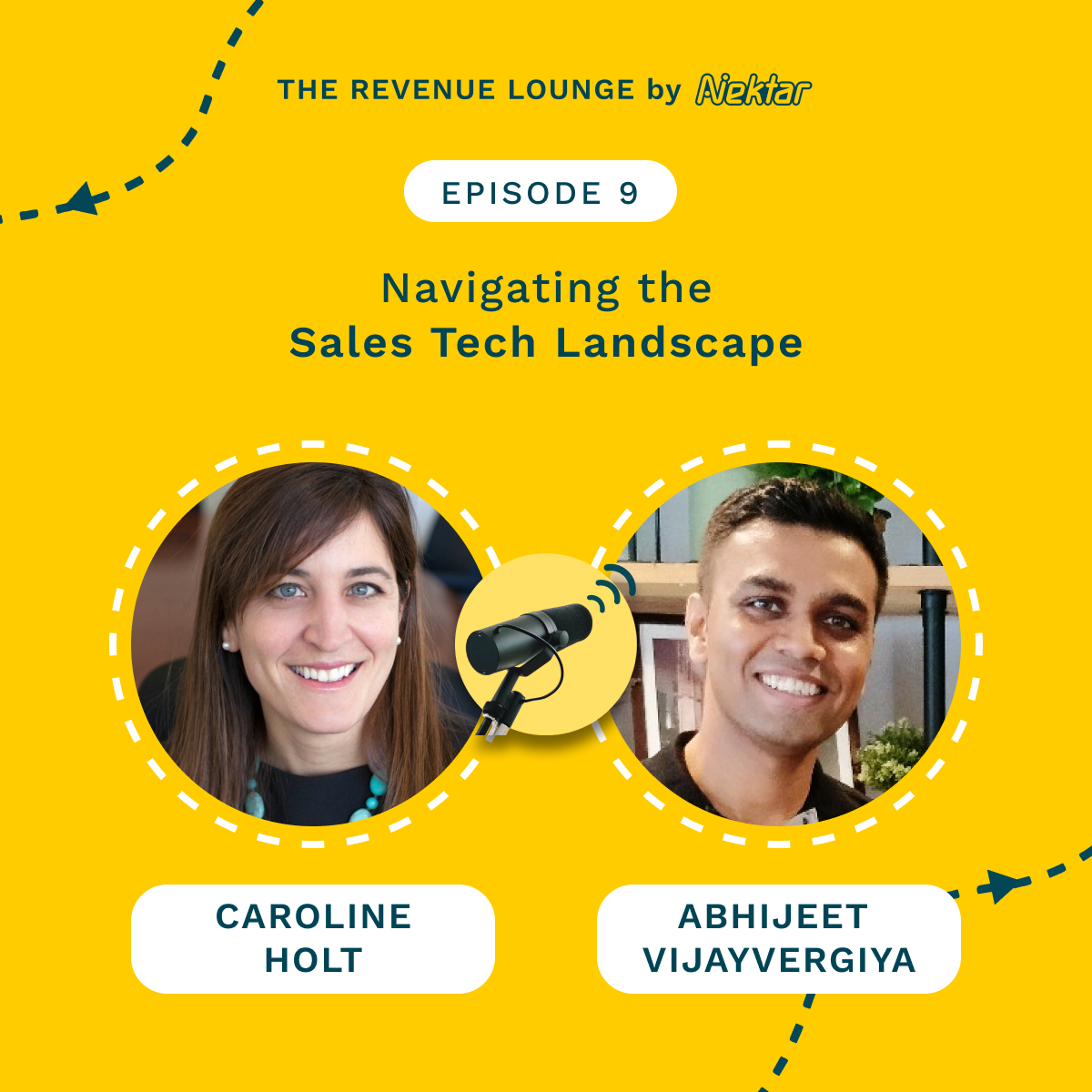
Ep #9: Navigating the Sales Tech Landscape
Listen Now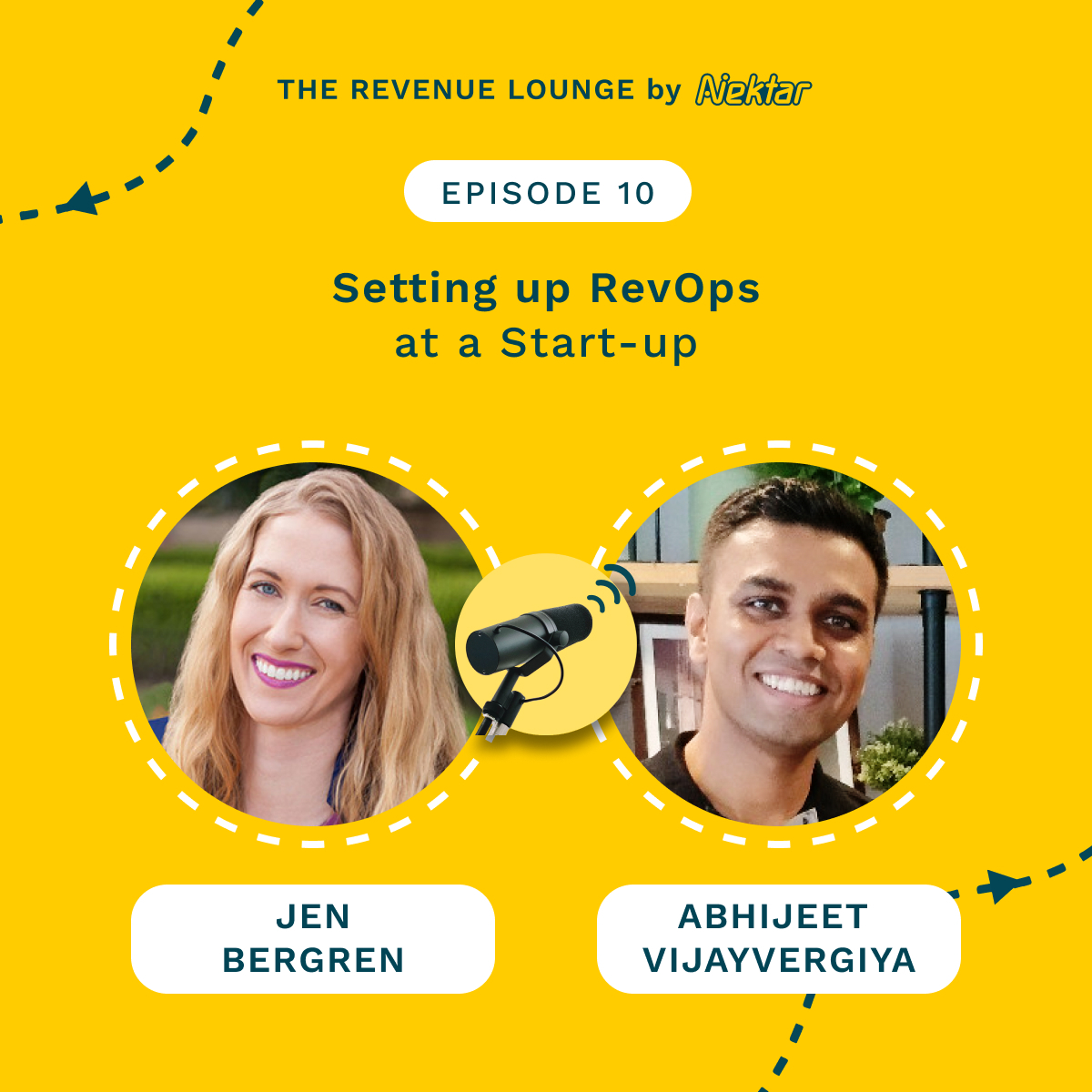
Ep #10: Setting Up RevOps at a Startup
Listen Now